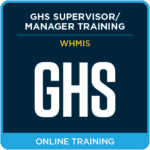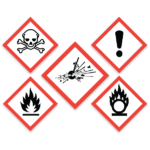 Workplace Safety During the Holiday Season
Workplace Safety During the Holiday Season
As the holiday season approaches across North America, organizations in retail, manufacturing, logistics, and office environments face heightened safety challenges. Increased production schedules, customer demand, and festive workplace activities can elevate risks if proper precautions are not taken. A proactive safety strategy ensures that employees end the year safely and start the new one without incident.
The Seasonal Safety Outlook
The holiday season is a time for celebration and togetherness—but for many workplaces, it’s also a period of elevated hazards. From slippery floors and overloaded outlets to fatigue and stress, the potential for accidents rises sharply. These months require reinforced safety management systems and ongoing vigilance.
Holiday conditions can heighten existing hazards and introduce new ones. Use this enhanced checklist to raise awareness, reinforce safety programs, and adapt training for the season.
Manage Increased Workloads and Deadlines
End-of-year targets and peak demand can lead to fatigue, overtime, and rushed decisions. Supervisors should monitor workloads, enforce rest breaks, and reinforce safe work practices. Whether in a warehouse, store, or office, remind teams that efficiency must never compromise safety.
Address Slips, Trips, and Falls
Increased foot traffic, cluttered walkways, and winter moisture can create slip and fall hazards. Plan inventory storage in advance to keep aisles, exits, and corridors clear. Enhance housekeeping schedules to keep floors dry and well maintained. Proper lighting in entrances, docks, and parking lots further reduces risks.
Prevent Musculoskeletal and Struck-By Injuries
The holiday rush often brings more lifting, bending, and reaching. Reinforce proper lifting techniques, set clear weight limits, provide ergonomic tools, and rotate tasks to minimize repetitive strain. Review ladder safety procedures to prevent struck-by incidents and falls during stocking or decorating.
Manage Electrical and Fire Hazards
Holiday lighting and powered decorations can create shock and fire risks. Inspect all cords, outlets, and decorations for damage before use, and ensure they meet UL or CSA certification. Avoid overloading outlets and keep flammable materials away from heat sources. Decorations must never block exits, alarms, or sprinklers.
Respond to Weather-Related Hazards
Cold weather introduces its own set of risks. Keep entrances and exits free of snow and ice, use slip-resistant mats, and ensure parking areas are well cleared. Outdoor workers should wear insulated clothing, hats, and gloves, and take scheduled breaks to prevent cold stress or frostbite. Delivery staff should wear reflective clothing and remain alert to traffic and reversing vehicles.
Monitor Stress, Fatigue, and Mental Health
High workloads, extended hours, and personal stress can lead to exhaustion, distraction, and reduced focus. Encourage open communication and proactive stress management. Short breaks for stretching or breathing exercises can improve alertness. Adjust shifts or rotate tasks when needed to reduce fatigue.
Prevent Workplace Violence and Aggressive Behavior
The holiday season can bring increased customer tension. Review your Workplace Violence and Harassment Policy and ensure all front-line staff, supervisors, and managers receive de-escalation training. Reinforce calm communication, situational awareness, and clear reporting procedures.
Protect Against Illness and Promote Hygiene
Cold and flu season overlaps with the holidays, making illness prevention a key part of workplace safety. Encourage employees to stay home when ill and promote vaccination. Clean high-touch surfaces frequently and remind staff about proper handwashing protocols. A healthy team is a productive one.
Revisit Hazard Communication and Emergency Procedures
The end of the year is an ideal time to review hazard communication (HazCom) and WHMIS training, labeling, and emergency procedures. Temporary and seasonal staff must receive adequate onboarding and safety orientation to maintain OSHA and WHMIS compliance.
Why Holiday Injuries Increase
Injury rates often rise during the holidays due to several converging factors:
- Increased workloads and stress create fatigue and rushed decisions.
- Temporary workers may lack adequate training or familiarity with hazards.
- Distractions from decorations, events, or customers reduce situational awareness.
- Seasonal weather increases slip and fall risks.
- Overexertion from lifting, stocking, or long hours causes strain injuries.
These combined stressors create an environment where accidents become more likely—making safety training and leadership engagement critical.
The Cost of Non-Compliance
Ignoring safety during the holidays can have significant consequences:
- Injuries and fatalities that impact workers and families.
- Fines and penalties from OSHA or other regulators.
- Legal liability and reputational harm.
- Lost productivity and workforce morale.
- Increased insurance costs and coverage limitations.
Maintaining compliance is both a moral and operational imperative.
How Safety Training Makes the Difference
Comprehensive safety training empowers employees to identify and prevent hazards before they escalate. Refresher sessions—especially for temporary or seasonal workers—should address lifting techniques, electrical safety, hazard reporting, and stress management. When safety becomes part of the culture, employees are more confident, engaged, and protected.
A Safe Season Starts with Awareness
The holidays should be a time of celebration, not incident response. By implementing proactive safety measures and reinforcing compliance programs, organizations can create secure, productive workplaces for employees and customers alike.
The Compliance Center delivers the tools, labeling systems, and expert training needed to maintain compliance and reduce risk across North America. From hazard communication to customized safety programs, our team ensures your workplace remains safe, compliant, and ready for the season ahead.
Stay up to date and sign up for our newsletter!
We have all the products, services and training you need to ensure your staff is properly trained and informed.
 SDS Services SDS Services |
 OSHA/WHMIS/GHS OSHA/WHMIS/GHSTraining Courses |
 GHS Pictograms GHS Pictograms |
Sources:
OSHA: https://www.osha.com/blog/ehs-safety-resolutions
Workplace Safety and Prevention Services: https://www.wsps.ca/resource-hub/articles/holiday-countdown-keep-employees-safe





